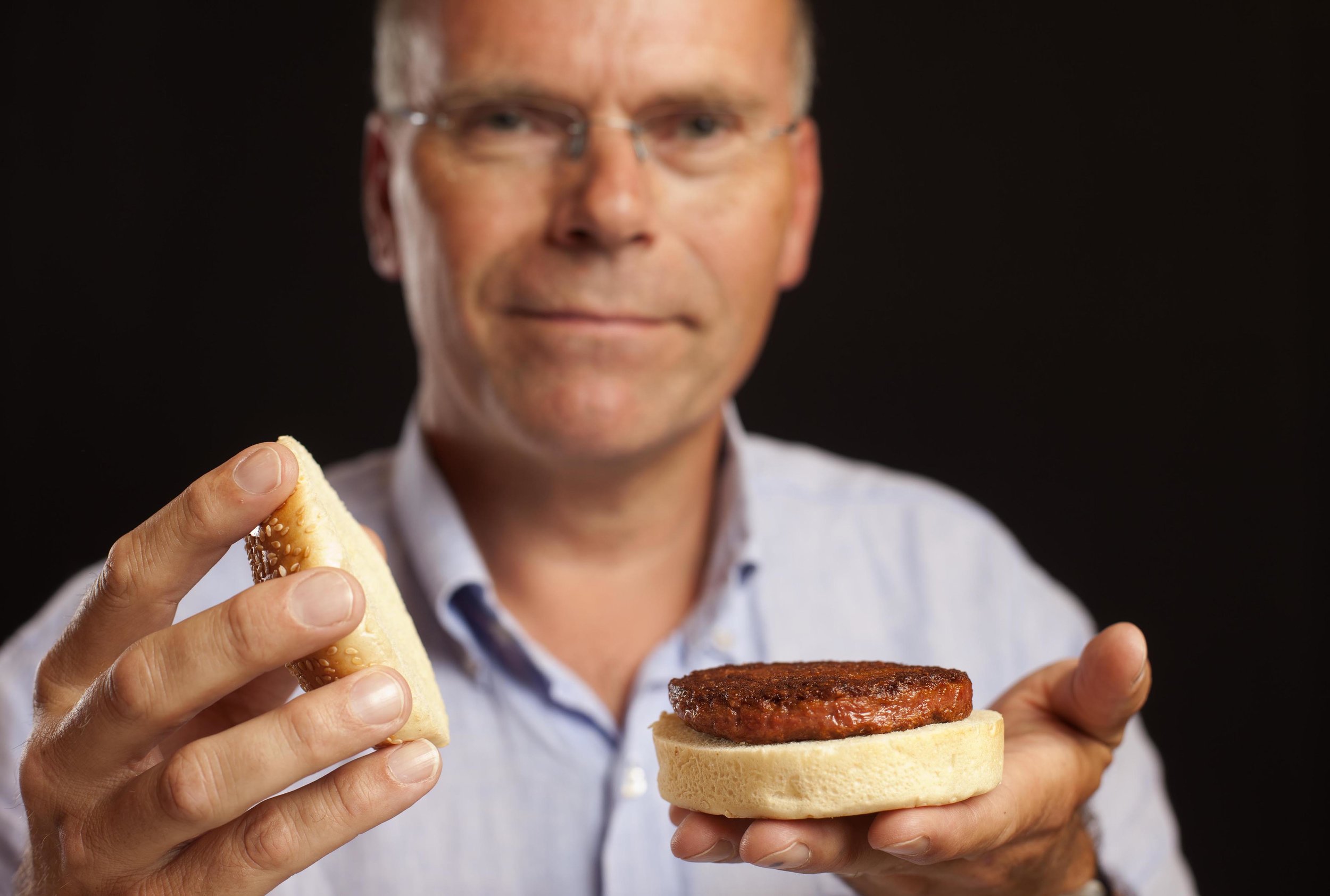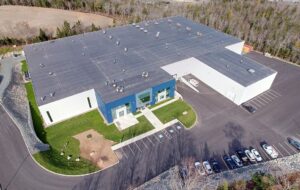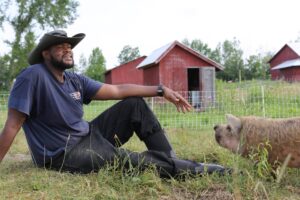“I don’t use the term clean meat for a couple of reasons; it can’t translate into Dutch, French or German, and it kind of suggests that current meat is dirty, which I think unnecessarily criminalizes the meat industry and there’s no need for that.”
Dr. Mark Post is the co-founder and chief scientific officer of Mosa Meat, the Dutch startup that produced the first ever lab-grown beef burger in 2013.
“The meat industry has been feeding us for a long time, with high-quality meat of limited danger and harm to us, and I’ve spoken to farmers and meat producers who take offense to this label, and I sympathize.”
By definition, however, meat made by growing or culturing cells will be sterile, he adds. “There can be no contamination, so in that sense it is clean. If we would have contamination any time during the process, it would kill our process. If there’s any contamination, the growing media would become rapidly overgrown by bacteria, and we have no product.”
Mosa Meat refers to its technology as ‘cultured meat’ but Post doesn’t think the terminology is critically important at this point: the use of the term ‘meat’ is still being debated and brand names will one day take over anyway, he says.
New funding
Post is speaking to AgFunderNews after closing a €7.5 million round of Series A funding to continue the research and development of its slaughter-free hamburger.
Two strategic investors co-led the funding round: M Ventures, the venture arm of German healthcare, life science, and performance materials giant Merck Group, and The Bell Food Group, a Swiss meat processor and brands company. They were joined by a syndicate of impact investors, including the Glass Wall Syndicate.
The funding will continue Mosa Meat’s efforts to get a hamburger on the market by 2021, a timeline that’s dictated mostly by the need for regulatory approval in the European Union, which takes at least a year and a half, according to Post. The company will launch the burger in the US later.
Post and his colleagues also want to refine the burger they’ve been developing by adding fat tissue to it, scaling up cell production, and prepare for the construction of a pilot production plant.
Mosa’s mission
Mosa Meat’s mission is to revolutionize meat production to match soaring global demand, that it says will be 70% higher in 2050, in a sustainable way that’s better for the environment. Estimates from the UN’s FAO in 2006 put livestock production at 18% of global greenhouse gas emissions, ahead of transportation (14%) and below energy production (21%).
Cultured meat will require much less energy compared to livestock-based meat, and a reduction in greenhouse gas emissions of up to 96%, according to a life cycle analysis published in Environmental Science and Technology.
And, with veganism and vegetarianism a growing trend in the developed world, the moral and sustainable credentials of the cultural meat movement have caught the attention of the mainstream media contributing to some levels of hype about what’s still a nascent industry.
“We have had unrelenting media attention over the last 10 years; every year I think it will fade, but it’s only getting worse. Last year I could have held interviews every day,” he says.
“To be honest, with all the media interest every week, it’s difficult to stay level-headed.”
But level-headed he is; Post is very aware of the challenges facing his industry, particularly surrounding the cost of the process.
The costly challenge
While the cost today is significantly lower than the €250,000 ($300,000) cost of Post’s first lab-grown burger in 2013, there are no guarantees that it will become an affordable alternative to animal-grown beef in the near future.
The most expensive part of the process is the cell production, which is the second of three stages. The first stage is the harvest of cells from animals, which can be done by extracting stem cells from a small biopsy of a beef cow. Then you let those cells proliferate and expand as much as possible — usually into the trillions — by placing them in a growing medium. And the third phase is organizing those cells into packages of 1.5 million cells in a specific shape and condition where they can produce tissue.
The third phase is the most labor-intensive, so Mosa Meats is looking into automating that part with robotics. But the second phase is the most resource-intensive and expensive due to the cost of the media in which the cells grow; this media represents 80% of the total cost.
Originally cultured meat companies used fetal bovine serum, which is a liquid obtained from the clotted blood of a calf fetus. Not only does this have moral implications, as the fetus does not survive the serum’s extraction, but it’s an unrealistic source of media for the industry, says Post.
“It’s inherently unsustainable to use media from the animal you’re trying to reduce numbers of and that’s true for everyone working in this field. No-one, in the end, will put a product on the market that relies on bovine serum; it’s just not doable.”
How low can it go?
Mosa Meat has changed the serum for substitute proteins that are a similar makeup of insulin made for diabetics. The low demand for these proteins and the fact that currently they’re medical grade, makes them expensive.
Mosa Meat is cutting down costs in three ways:
- Getting as many cells out of a liter of fluid as possible, increasing the cell density of the culture solution
- Finding all the individual components that add significantly to the cost of the medium to try to get alternative ways to produce them, or start producing in-house
- Looking at the bulk: can the bulk be sourced differently so it doesn’t end up in the medical realm?
“There might be a difference between medical grade-certified media and food grade-certified,” says Post. “If you took all the individual ingredients of the medium and dissolved them in water and fed that to the cells, that could be a factor 30 lower in cost than buying it ready-made. We could even source our amino acids in a different way, but that’s all future development, and we’re not doing that right now.”
Post is uncertain how long it will take for the cost to come down to a realistic level for the mass-production of cultured meat for the wider market but is “pretty confident” Mosa Meat will be able to make a hamburger for €10 to sell to restaurants and specialty grocers in 2021.
In the future, Post believes it should be possible to manufacture cultured meat for less than animal-grown meat since the feed for both processes — in the case of cultured meat the feed is the medium — represents 80% of the overall cost of production.
“If we become more efficient at converting the media or ‘feed’ into animal protein, cultured meat should, in the end, be cheaper,” he says.
“It will rely on the effort of many people including the competition to bring the price down of the components and how fast; but there are so many factors there that it’s hard for me to guess in what timeline. It could be in three-to-four years, but it could also take seven years.”
Promoting plant-based diets
Reaching a price that all consumers can afford is the goal of many in the cultured meat industry, and for Post, it’s about giving consumers more choice without the limitations of supply or price, or thoughts about externalities.
“If consumers can make any choice they want, that’s what I would call progress.”
He also believes that cultured meat could contribute to the overall reduction in the consumption of meat as recommended by the World Health Organization.
“Cultured meat products might actually form a path towards a more plant-based diet,” he says. “Meat is a very cultural thing – it still refers to humans’ hunter instincts and dominance over other species. We may not consciously think about that when we take a bite, but it’s still somewhere in the back of our minds. Even if cultured meat is molecularly the same, it isn’t produced by killing an animal, and that makes it culturally different. You could argue that if cultured meat helps disconnect meat from our hunter instincts, this could lead to the hunter instinct fading over time, and may make people more open to diets with a higher plant-based component in future.”
Photo: Mark Post presenting the first cultured burger in 2013. Credit: David Parry/PA




